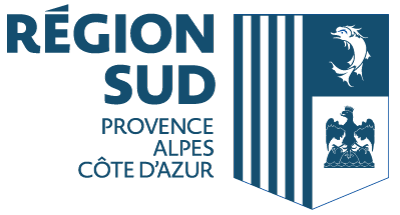Restoration project 'Galenbecker See' for priority species
(Galenbecker See)
Date du début: 1 mai 2001,
Date de fin: 31 déc. 2007
PROJET
TERMINÉ
Background
In recent years, the water level of the lake at Galenbeck in Mecklenburg West Pomerania has reclined, and the surrounding areas of reeds and wet grasslands have been vastly reduced. During the last 50 years, following one of the biggest farmland reclamation and bog drainage scheme of the German Democratic Republic, the volume of the lake has declined by more than 50%. As a result of the continued sinking of the fen layer in the surroundings of the lake, the entire fen except the immediate vicinity of the lake now lies below the lakeâs water level, and the lake is therefore under constant threat of leaking. Valuable reeds, sedge marshes and wet meadows have disappeared in the process, and with them a rich and diverse wildlife. The lake water has also become eutrophic and partly silted up, due to a permanent input of nutrients from agriculture and fish farming.
The lake is still an important staging post for at least 80 migratory bird species, and together with the adjacent fen, it has been registered at UNESCO as a "wetland area of international importance" (according to the RAMSAR Convention) as well as declared an EU special protection area for birds. However, prior to the start of the project, just two pairs of bittern (Botaurus stellaris) were estimated to breed in the area, and the populations of corncrakes (Crex crex) and the lesser spotted eagle (Aquila pomarina) had also sensibly declined.
Objectives
The aim of the LIFE Nature project was to restore the lake to its original condition, thereby bringing back a rich birdlife to the area. The project was based on several analyses and feasibility studies conducted in the 1990s and at the beginning of the century. Raising the level of the lake would require the construction of an 7.3 km dyke, preventing drainage of the water and marking off the project area from the surrounding cultivated grassland. The plan also entailed running the water flowing into the lake through a filter of reeds to remove nutrients. This would improve the transparency of the lakewater and enable the restoration of fish stocks to their natural levels.
Within the redevelopment area, the project aims to raise the water level to 9.25m (the normal high water level) and create a rewetting zone which will cover 610ha. Such a raise in the water level will result in a large submerged shallow water area adjacent to the lake, optimal for the growth of peat. Encouraging this process will maximise the potential habitat for reeds. In order to protect the moor grass meadows (Molinia) that are found in higher ground, excess water will be drained through a fixed drainage step.
The general elevation of the water level in the project area will also result in a change of vegetation in areas that will not be permanently flooded. Apart from wet meadows, the landscape will be dominated by sedge marshes and herbaceous vegetation, which form the natural habitat of the corncrake. The restoration works will also encourage the propagation of the amphibious fauna, providing improved hunting grounds for the lesser spotted eagle. The final objective is to create a macrophyt-rich clear water lake that serves as a retention basin for the adjacent fens and provides visual hunters such as the pike (Esox lucius) and bittern with suitable feeding grounds.
Results
As a first step of the restoration work, the beneficiary, Staatliches Amt für Umwelt und Natur Ueckermünde, acquired the use of considerable areas of farmland (326ha in total), which would be flooded or become wetlands. The raising water level of the area would create new amphibia-rich wet grasslands and sedge mires for the lesser spotted eagle and the corncrake, as well as new reed beds for the bittern. To secure local acceptance of the scheme, an advisory board made up of representatives of interest groups was set up at the beginning of the project.
The project reduced the âterrestrialisationâ of the lake, resulting from the import of sediments into the lake. This process was reversed by filtering out nutrients from the main water inflow feeding the lake through a 5 ha large reed filter. Another key action of the project was the banning of selective fishing of predatory species in order to reduce the coarse fish population. This in turn will increase the population of microscopic filterers in the plankton, further improving the quality of the water.
The planned 7.3km long dyke was constructed, preventing the drainage of the water of the area and creating a 600ha re-wetting zone. The raising of the water level of this zone is a gradual process and the positive impacts are not immediately recognisable. The organisers emphasise that long-term regeneration is best assured through a slow increase in re-wetting and are optimistic that population numbers of the target species, the bittern and corncrake, will increase in the near future.
The last major task of the project was to protect the banks of the dyke from erosion. In some sections, the banks were built with peat and covered with a plastic material. The banks of the dyke are protected through a filling with rocks. Observation huts and signs are also being erected ahead of the rising of the water levels. Also as part of the project, two films were made: one about the project area and one about the LIFE project. A popular scientific brochure was also published titled, âNaturraumsanierung Galenbecker Seeâ.




